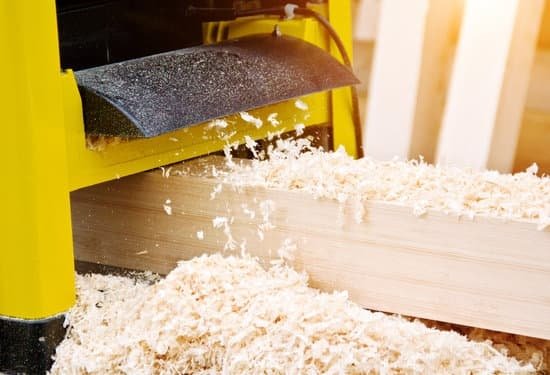Have you ever wondered what is a cutting list in woodwork? In the realm of woodworking, a cutting list serves as a vital blueprint that outlines the materials, measurements, and quantities needed for a successful project. This comprehensive document essentially guides woodworkers through the process of cutting, shaping, and assembling various pieces to bring their designs to life.
A cutting list in woodwork holds significant importance as it ensures efficiency, accuracy, and organization throughout the project. By listing out all the necessary components beforehand, woodworkers can streamline their workflow, minimize material waste, and avoid costly mistakes. Whether you are a beginner or seasoned craftsman, adhering to a well-crafted cutting list can ultimately save you time and resources in the long run.
Key components of a cutting list typically include detailed information on the types of materials required, precise measurements for each piece, and the exact quantities needed. By having this information readily available, woodworkers can effectively plan their cuts, optimize material usage, and keep track of inventory. Additionally, creating a clear and concise cutting list sets the foundation for smooth project execution and successful outcomes.
Importance of a Cutting List in Woodworking Projects
A cutting list in woodworking is a detailed breakdown of all the materials needed for a project, including the measurements and quantities required. This essential document serves as a blueprint for woodworkers, guiding them through the process of cutting various pieces accurately to assemble their desired creations. Understanding what is a cutting list in woodwork can significantly streamline the project planning and execution phases.
One of the primary reasons why a cutting list is crucial in woodworking projects is efficiency. By having a comprehensive breakdown of all the materials needed beforehand, woodworkers can minimize waste and optimize the use of resources. This leads to cost savings and ensures that they have everything they need to complete the project without unnecessary delays or trips to the store.
Another key benefit of using a cutting list is accuracy. With precise measurements and quantities outlined in the list, woodworkers can avoid costly mistakes and ensure that each piece is cut to the exact specifications required for assembly. This results in a higher quality finished product that meets their expectations and those of their clients.
| Benefit | Explanation |
|---|---|
| Efficiency | Minimize waste and optimize resource usage |
| Accuracy | Avoid costly mistakes and ensure precise cuts |
Key Components of a Cutting List
A cutting list in woodwork is essentially a document that outlines the materials needed for a woodworking project, along with the measurements and quantities required for each component. This vital tool serves as a roadmap for woodworkers, guiding them through the process of cutting and assembling pieces accurately and efficiently.
By providing detailed information on what materials to use, how much of each material is needed, and the specific measurements to follow, a cutting list helps streamline the woodworking process and ensure precision in the final product.
One of the key components of a cutting list is the list of materials needed for the project. This includes specifying the type of wood or other materials required, such as plywood or MDF, as well as any additional supplies like screws or glue. Having a clear list of materials ensures that woodworkers have everything they need before they start working on their project, preventing delays and interruptions once construction begins.
In addition to listing the necessary materials, a cutting list also provides detailed measurements for each component of the project. This includes dimensions for pieces to be cut from larger boards or sheets, such as lengths, widths, and thicknesses. Accurate measurements are crucial in woodworking to ensure that all pieces fit together properly and align correctly during assembly. The cutting list acts as a reference guide for woodworkers to follow precisely when cutting their materials to size.
How to Create a Cutting List for a Woodworking Project
A cutting list in woodwork is a crucial document that provides detailed information on the materials needed, measurements required, and quantities of each component for a woodworking project. Creating an accurate cutting list is essential for ensuring efficiency, minimizing waste, and achieving precise results. In this section, we will explore the step-by-step process of how to create a cutting list for your woodworking project.
Gather Project Plans and Specifications
The first step in creating a cutting list is to gather all relevant project plans and specifications. This includes detailed drawings, sketches, and any other documentation that outlines the design and dimensions of the project. Take note of specific measurements, angles, and materials specified in the plans as this information will be critical for creating an accurate cutting list.
List Materials Needed
Once you have gathered all the necessary project plans, make a comprehensive list of materials needed for the woodworking project. This should include the type of wood or other materials required, as well as any additional components such as hardware or fasteners. Be sure to consider factors like grain direction, moisture content, and quality when selecting materials for your project.
Calculate Measurements and Quantities
After listing all required materials, calculate the measurements and quantities needed for each component based on the project plans. Take into account factors like stock sizes available, standard dimensions of wood boards or sheets, and allowances for waste or errors during cutting. Use these calculations to create a detailed breakdown of all pieces required for your woodworking project in your cutting list.
By following these steps and taking into consideration all necessary details from your project plans, you can create a comprehensive cutting list that will guide you through your woodworking project with precision and efficiency. The accuracy of your cutting list will directly impact the quality of your final product by ensuring that all components are cut to the correct size and quantity needed.
Tools and Resources Needed for Generating a Cutting List
Software for Design and Cutting List Generation
One of the essential tools needed for creating a cutting list in woodwork is software designed for this specific purpose. There are various programs available that can help you input your project dimensions, materials, and other details to generate an accurate cutting list. These software options not only save time but also reduce the margin of error in creating a cutting list manually. Some popular woodworking software includes CutList Plus, MaxCut, and SketchList 3D.
Measuring Tools
In addition to software, having the right measuring tools is crucial when generating a cutting list for your woodworking project. A tape measure, combination square, and calipers are essential items that will help you take accurate measurements of your materials. It’s important to ensure that your measuring tools are reliable and calibrated correctly to avoid errors in your cutting list that could lead to wastage of materials.
Material Inventory
To create an effective cutting list, you must have a comprehensive inventory of all the materials needed for your woodworking project. Make sure you have accurate measurements and quantities of each material required before finalizing your cutting list. Maintaining an organized inventory will not only streamline the process of generating a cutting list but also prevent delays or mistakes during the construction phase due to miscalculations or missing materials.
Tips for Accurate Measurement and Cutting From a Cutting List
When working on a woodworking project, having an accurate cutting list is essential to ensure that you have the right materials and measurements for each part of the project. But knowing how to effectively use that cutting list is just as important. Here are some tips to help you achieve accurate measurement and cutting from a cutting list:
1. Review Your Cutting List Carefully: Before diving into your woodworking project, take the time to carefully review your cutting list and understand each component. Make sure you have all the materials listed and double-check the measurements required for each piece.
2. Organize Your Workspace: Keeping your workspace organized can help prevent mistakes when cutting materials. Make sure you have a clear area to work in and arrange your tools and materials in a way that is easy to access.
3. Use Proper Measuring Tools: Accuracy in measurement is crucial in woodworking, so make sure you are using the right measuring tools such as a tape measure, square, or ruler. Double-check your measurements before making any cuts to avoid errors.
4. Follow Cutting Instructions: Pay close attention to the cutting instructions provided in your cutting list. Whether it’s straight cuts, miter cuts, or bevel cuts, following these instructions precisely will ensure that each piece fits together correctly in your project.
Using these tips will help you achieve precise results when working from a cutting list in woodwork projects. By taking the time to review, organize, measure accurately, and follow instructions carefully, you can avoid costly mistakes and create high-quality woodworking pieces every time.
Common Mistakes to Avoid When Working With a Cutting List
When working on woodworking projects, having a well-thought-out cutting list is essential to ensure accuracy and efficiency in the cutting process. A cutting list in woodwork is a detailed document that outlines all the materials needed, their measurements, and quantities required for a specific project.
It serves as a roadmap for cutting pieces of wood to the correct dimensions before assembly. Understanding what is a cutting list in woodwork is crucial for any woodworker, whether they are beginners or experienced craftsmen.
To avoid errors and waste of materials, it is important to pay attention to common mistakes that can occur when working with a cutting list. Here are some key things to keep in mind:
- Not double-checking measurements: One of the most common mistakes is not verifying the measurements on the cutting list before making cuts. Even small inaccuracies can lead to faulty pieces that do not fit together properly.
- Ignoring grain direction: Failing to consider the grain direction of the wood when cutting can result in weaker joints and potentially compromise the structural integrity of the final project. Always align your cuts with the grain for stronger pieces.
- Skipping over material waste: Efficient use of materials is crucial in woodworking, so failing to account for material waste when creating a cutting list can lead to underestimating how much material is needed. Make sure to factor in allowances for offcuts and scraps.
By being aware of these common mistakes and taking precautions to avoid them, woodworkers can streamline their cutting process and produce more accurate results when following a cutting list. Adhering to best practices and paying attention to detail will ultimately lead to better craftsmanship and successful woodworking projects.
Examples of Cutting Lists for Different Woodworking Projects
A cutting list in woodwork is essentially a detailed breakdown of all the materials needed for a specific woodworking project. It includes measurements, quantities, and sometimes even the order in which the materials should be cut.
This document serves as a roadmap for woodworkers, guiding them through the project by outlining exactly what materials are required and how they should be prepared. By having a cutting list at hand, woodworkers can streamline their process, reduce waste, and ensure greater accuracy in their projects.
One key component of a cutting list is the materials section. This part of the list specifies all the types of wood or other materials needed for the project. Whether it’s hardwood, softwood, plywood, or any other material, the cutting list provides a clear inventory to work with.
The measurements section details the dimensions of each piece that needs to be cut from these materials. From lengths to widths to thicknesses, precise measurements are crucial for ensuring that all parts fit together seamlessly in the final assembly.
In addition to materials and measurements, the quantities section of a cutting list outlines how many pieces of each part are required for the project. This information helps woodworkers plan their purchases accordingly and avoid any last-minute shortages or excess supplies. By carefully following a cutting list’s specifications for materials, measurements, and quantities, woodworkers can efficiently tackle their woodworking projects with confidence and precision.
| Importance | Details |
|---|---|
| Streamline Process | A cutting list guides woodworkers through projects efficiently. |
| Precision | Precise measurements lead to accurate assemblies. |
Conclusion
In conclusion, understanding what is a cutting list in woodwork is essential for anyone undertaking woodworking projects. A cutting list serves as a roadmap that guides woodworkers through the materials needed, precise measurements, and quantities required for a successful project. By having a detailed cutting list, woodworkers can streamline their process, reduce waste, and ensure accurate cuts throughout their project.
Utilizing a cutting list in woodworking projects is crucial for efficiency and precision. It helps in organizing materials, minimizing errors in measurements, and ultimately saving time and resources. By following a well-prepared cutting list, woodworkers can confidently tackle their projects with confidence and achieve professional results.
In summary, incorporating a cutting list into your woodworking process can greatly enhance the quality of your projects. It enables you to work systematically, avoid mistakes, and make the most out of your materials. By understanding the importance of a cutting list and following the guidelines outlined in this article, you can elevate your woodworking skills and produce exceptional pieces with precision and finesse.
Frequently Asked Questions
What Is the Meaning of Cutting List?
A cutting list is a detailed document that specifies the dimensions and quantities of all the pieces of material needed for a particular project. It serves as a guide for cutting materials accurately to size before assembly.
Why Is a Cutting List Important?
A cutting list is essential because it helps ensure accuracy, efficiency, and cost-effectiveness in a woodworking or carpentry project. By detailing all the required cuts and dimensions beforehand, it minimizes errors, reduces waste, and saves time during the construction process.
Why Do Carpenters Make Cut Lists?
Carpenters create cut lists to streamline their workflow and improve productivity in their projects. Having a precise list of all necessary cuts allows them to plan ahead, optimize material usage, and work more efficiently.
With a cut list in hand, carpenters can confidently proceed with cutting materials knowing they have all the necessary information at their fingertips to complete the job accurately.

Hi everyone! I’m a woodworker and blogger, and this is my woodworking blog. In my blog, I share tips and tricks for woodworkers of all skill levels, as well as project ideas that you can try yourself.





